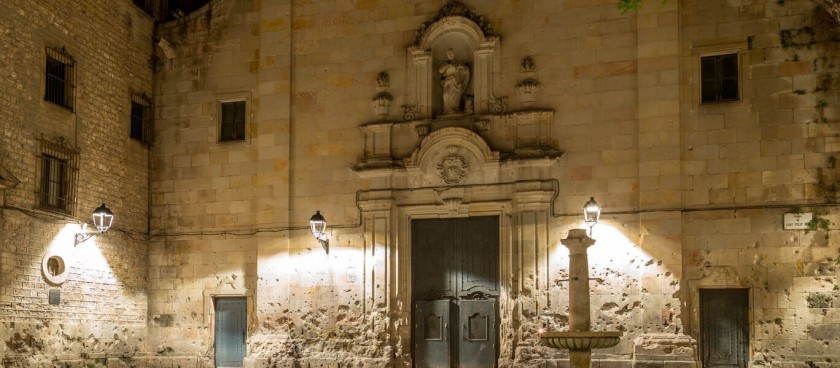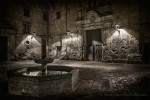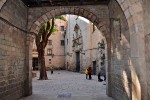-
#Churches , #Towns , #Architecture
To the right of the church is the School of Saint Felip Neri which uses the square as a playground. To the left of the church is a house used by the Oratory of Saint Philip Neri. In the centre of the square is an octagonal fountain, dedicated as a symbol of life. The architecture of the square and surrounding buildings is in the medieval Baroque-style.
History
The square was once home to the Palace of Neri built in 1752. In the mid-20th century, Gothic buildings from other areas of the city were moved stone by stone to the square, instead of demolishing them to make room for urban developments. When the hotel Neri was built it was faced in similar gothic stone to maintain the gothic style of the square. In 1938 during the Spanish Civil War, Francisco Franco laid siege to the city of Barcelona. On the 30 January 1938, one of Franco's bombs fell on the church killing 30 people most of whom were children from the School of Sant Philip Neri and some were refugee children from Madrid where the church had been turned into a makeshift orphanage. As people pulled survivors from the rubble, a second bomb hit the square, killing 12 more bringing the death toll to 42. It was the second worst bombing hit in Barcelona during the war. Evidence of the bombings can be seen in the pockmarked walls of the church. Museu del Calçat, a footwear museum in the square was closed in 2015 and building remains unused.
Myths
A myth spread by the Francoist authorities stated that the pockmarks in the stone were from the bullets of an anarchist execution of church priests. This was spread in an attempt to cover up evidence of the 1938 bombings.


